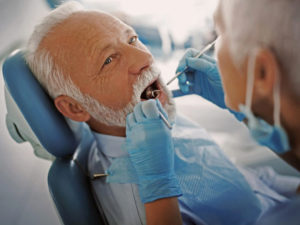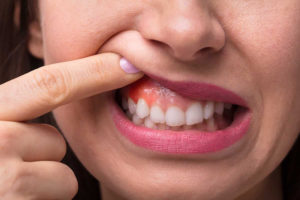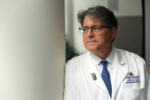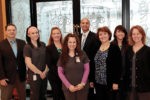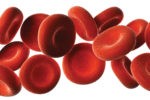Oral Cancer Awareness
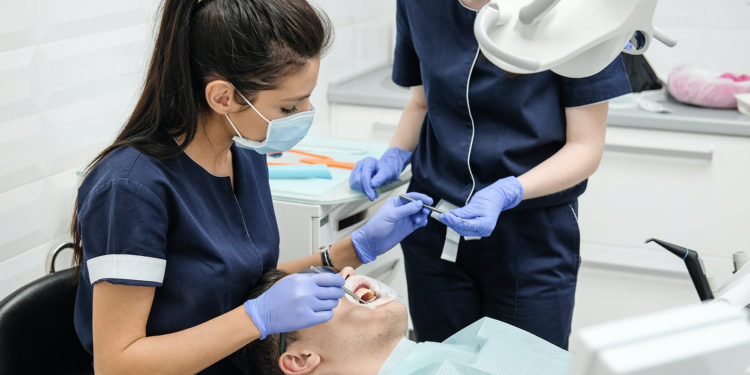
Make Advocacy Last Beyond April
We’d like to thank Brian Hill, founder of the Oral Cancer Foundation, and Jo-Anne Jones RDH, an OCF board member, recognized thought leader, an award-winning speaker, and educator for their generous time and valuable insights in contributing to this article and for their tireless efforts to raise awareness for oral cancer.
At Healthy Kansas City, we like to maintain a positive attitude, but we are not afraid to raise our voice and shine a light on issues that concern our readers, particularly when the opportunity to make a difference and change the tide is so great. This is one of those times.
April is Oral Cancer Awareness Month. Unlike other awareness campaigns, which largely serve as a reminder to the community to keep an issue at the front of their minds, information gained through the Oral Cancer Awareness Month campaign may be one of the few times an individual ever hears about the risks of this highly-preventable cancer.
“Oral cancer awareness among the American public is low,” says Brian Hill, oral cancer survivor, and Founder of the Oral Cancer Foundation. “Unfortunately, when people seek out the OCF, it is because the need already exists. Since you can control many of the risk factors, there is a huge opportunity to reach the community to prevent its occurrence or catch it at its earliest stages when it’s most treatable. However, we need to overcome some serious barriers to achieve this.”
Oral Cancer is Not On Our Radar, But it Should Be!
There is a near-universal misperception that oral cancer is relatively rare, says Jo-Anne Jones, RDH, speaker, educator, and an OCF board member.
“Oropharyngeal (back of the mouth including the posterior third and base of the tongue, soft palate, tonsillar tissue, uvula) is far more common than other cancers that we hear of more often such as liver, ovarian, stomach, thyroid, and Hodgkin lymphoma for instance. It is listed as the eighth leading site of estimated new cases of cancer for 2022 by the American Cancer Society. It is estimated 54,000 new cases of oral/oropharyngeal cancer will be diagnosed in the U.S. this year with an estimated 11,230 people dying from the disease. These figures do not take into account those who ‘survive’ the disease, the ‘lucky’ ones who live with permanent disfigurement, side effects of radiation which include continual ‘sores’ throughout the oral cavity, depleted saliva often referred to as ‘cotton mouth’, the continual fear of recurrence, and so many more issues that are a daily reminder of diminished quality of life. The incidence is much higher in males than females and pending the source 2–4x higher. Females seroconvert to a protective antibody much faster than males and much earlier in their sexual exposure.”
Concerningly, incidence rates continue to rise each year, she adds.
“A more recent development represents a serious health problem in many parts of the world including North America. A very common sexually transmitted viral pathway. Human papillomavirus, or HPV, is now the fastest-growing cause of the oral and particularly oropharyngeal cancer group. It is now the primary cause of tonsillar cancer in North America and Europe.”
We Can and Must Do More
Oral cancer is highly preventable and in large part determined by lifestyle choices, including smoking and alcohol use, and now HPV is a predominant risk factor. Fortunately, we have a vaccination that can prevent the vast majority of future cancers related to HPV.
“The CDC estimates that over 90% of HPV-related cancers could be prevented by vaccination alone. We need to as medical and dental professionals elevate awareness, and educate our patients about the HPV vaccine,” Jones continued.
Early detection is also key to saving lives. Historically, the most significant progress in reducing the death rates due to cancers has come through early detection and opportunistic screenings. When it comes to oral cancer, no group has a better opportunity to have an impact than members of the dental community.
“As dental professionals, we need to ask ourselves, are we fully invested in saving lives or simply carrying out our day-to-day tasks in a mechanical function? It truly comes down to that. There is much change in the landscape when it comes to oral/oropharyngeal cancer. We have a newer, strong risk factor, a call to action to screen opportunistically, and above all, an ethical responsibility to translate this newly acquired knowledge into practice. Oral cancer screening is NOT a choice. It is the ethical responsibility of a dentist and/or a dental hygienist. Screening, the bottom line, saves lives by improving earlier discovery at survivable stages. It is an inclusion in our curriculum. We are taught this. The gratification of saving a life can be compared to nothing else we do in dentistry,” asserted Jones.
The value of performing the short evaluation cannot be underestimated, Hill contends.
“Early discovery and diagnosis, yields better long-term outcomes and lowers morbidity to those who undergo treatments. Oral cancer is not hidden within the body in some hard-to-find location requiring an invasive examination. The majority of the time it is in plain view and can be seen with the naked eye or felt with the fingers. In most cases, its early, highly survivable stages are easily detected in a 3 to 5 minute painless visual and tactile examination.”
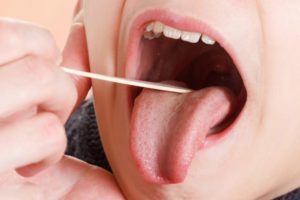
“We can avoid something that kills an American every hour of every day 24-7-365 if we promote avoiding risk factors that are in our control and getting screened,” he urged.
While dental professionals have the most opportunity to perform screenings, that does not exclude opportunity within the medical office.
“Even though we may not visually have access to see an HPV-related lesion, there are many associated symptoms which if identified can be potentially life-saving. Over 50% of HPV-related oropharyngeal cases had a neck mass as the first visible sign. Palpation of the lymph nodes is critically important. Equally important is the recognition of the subtle symptoms such as unilateral ear pain, hoarseness or a change in the voice, difficulty swallowing or pain when swallowing, asymmetrical tonsil size, a tongue that tracks to one side when stuck out and always any sore/lesion that does not heal within 14 days should be investigated further. Persistence is key,” Jones furthered.
Promoting Self-Screening
Yearly oral screenings are critical to oral cancer discovery but do not exclude the need for self-examination. The Check Your Mouth™ Campaign ( checkyourmouth.org ) is a public service effort created by The Oral Cancer Foundation, with the hopes of creating an informed public that is able to self-discover abnormalities that may be dangerous and self-refer. The site provides a short video that demonstrates how to perform an exam as well as helpful tools.
Joining Forces
Oral cancer exists and persists amid a perfect storm. Lack of awareness and funding keeps it from attaining awareness. It is time to change the tide. We encourage those within the medical and dental communities to perform routine oral cancer screenings and promote self-screenings. We also encourage our readers to visit the Oral Cancer Foundation website to discover more about research and advocacy. As a community, our commitment to action and awareness is an opportunity to translate practical goals into meaningful and measurable results in our county, community, and families.
For More Information Visit the Oral Cancer Foundation
The foundation’s goals are supported by a Scientific Advisory Board composed of leading cancer authorities from varied medical and dental specialties, drawn from premier cancer treatment, research, and educational institutions in the US.
